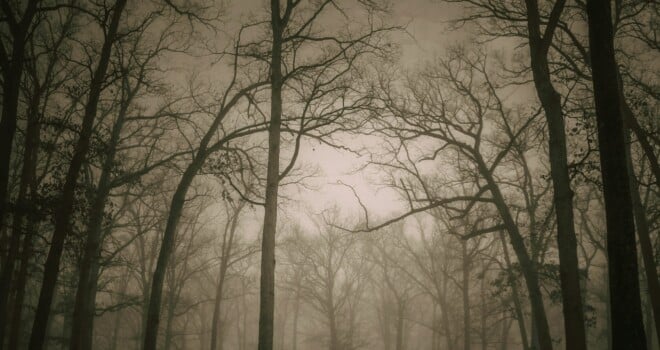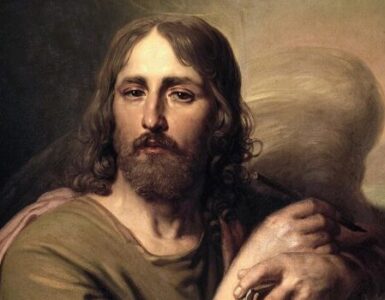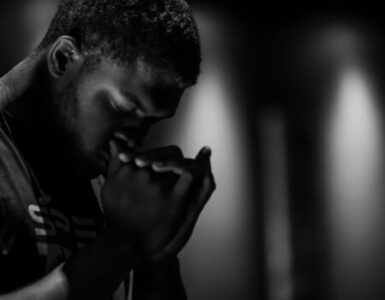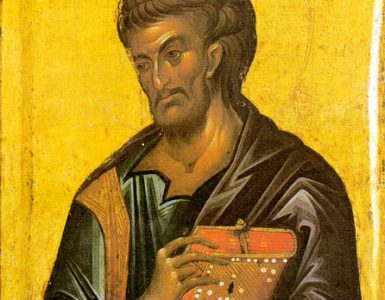There is something distinctly human about sitting around a campfire to share ghost stories. We love a good story, no matter how spooky it might be, and sharing these stories helps us build community and friendship. Perhaps we don’t sit around a campfire as much as we used to, and certainly less often than I’d like, but even in our technological age we delight in hearing and sharing stories just like our ancestors did.
Beyond the enjoyment of a spooky tale, some also believe in the reality of ghosts. In one poll, roughly 50% of Americans were found to believe in ghosts, with the same poll finding that 57% of US Catholics believe that the spirits of the dead can visit the living. So, many Catholics today believe in ghosts, but is there a historical precedence for such belief?
Defining Ghosts
Before we dive into historical beliefs in ghosts, it’s best to talk about the term ghost itself. We get the term ghost from the German word geist, which simply means “spirit.” The German term can be used to describe ghosts, like when we talk about a poltergeist (“noisy spirit”), but also used in a secular way like with the word zeitgeist, “the spirit of the age.”
When we talk about ghosts, we typically mean the spirits of the dead who visit the living. In the broadest sense, Catholics have believed in ghosts since the Apostolic age, but the word “ghost” feels inappropriate when we talk about visits from heavenly saints or purgatorial souls. In both cases, the visiting spirit is not trying to haunt the living but is carrying out God’s will. In some cases, a visit from a long-dead spirit can even be a great comfort.
Catholic Ghost Stories
In the Summa, St. Thomas Aquinas notes two saints who related such stories, St. Augustine and St. Gregory the Great. Both saints are regarded as Doctors of the Church in Catholicism, indicating their intellectual and spiritual influence on the Church; and both discussed the possibility of ghosts while sharing some early Christian stories of the dead visiting the living.
In a letter to St. Paulinus, St. Augustine discusses the appearance of St. Felix of Nola to the people of his city centuries after his martyrdom. According to the saint, the martyr appeared to the Christians of Nola during a barbarian siege of the city. St. Felix was beloved by the people of Nola, being known for his great care of the poor and his martyrdom. So, for the people of Nola, his appearance during the siege would be seen as comforting. This was witnessed by several people, with St. Augustine stating, “We have heard not by uncertain rumors, but by sure witnesses.”
St. Augustine is quick to point out that this event of a martyr visiting besieged people is rare in the order of things. The saint also notes that martyrs could only be “interested in affairs of the living” through divine power. Both Augustine and Aquinas tell us that such interventions are done to offer comfort to the living, so they aren’t what we think of as ghost stories, despite the numinous nature of these appearances.
St. Thomas Aquinas also refers to an account in the Dialogue of St. Gregory the Great. St. Gregory recounts the chilling experience he heard told in his youth about a deacon named Paschasius, who by all accounts was a virtuous man. Paschasius was known for giving freely to the poor, living a holy life, and writing commentaries on the Holy Spirit. However, the deacon also got involved in contentious papal politics. Unfortunately, the good man died while supporting a short-lived schism.
Years later, Bishop Germanus of Capua made his way to the thermal baths at the recommendation of his doctor. As he entered the hot baths, Germanus spotted a servant whom he realized was the dead deacon Paschasius. Germanus was afraid at the sight of the deceased man and was also disturbed that such a holy soul was in this place. When Germanus asked the deacon why his soul was in the bathhouse, Paschasius responded that his support of the antipope against the successor of St. Peter was the reason for his time in purgatory, and he begged the bishop to pray and say masses for him. Germanus did as he was asked and, after a few days, the ghost of Paschasius was no longer to be found in the baths.
The account of St. Gregory’s bathhouse ghost is a little more frightening than St. Augustine’s account of St. Felix of Nola. In terms of spectacle, you can almost imagine Germanus seeing the shade of Paschasius slowly emerging from the steam of the baths. However, although it is a bit chilling, it is still different from our modern concept of a ghost story. It is a hopeful story, showing that souls in purgatory can gain spiritual aid from the living.
St. Gregory’s account of the ghost of Paschasius follows some themes in later medieval ghost stories. Like St. Gregory, these stories tell of purgatorial spirits reaching out to the living for prayers and other spiritual favors. These medieval accounts are still hopeful and comforting, but they also begin to take the shape of what we would consider a ghost story.
Medieval Ghosts
Around the year 1400, an anonymous monk at Byland Abbey wrote down twelve ghost stories on blank pages of a manuscript of theological works. As representatives of the type of ghost stories told in medieval Yorkshire, we are fortunate that a monk felt they were worth recording.
Most of the Byland ghost stories involve souls seeking absolution so that they may move on from purgatory. As in St. Gregory’s account, these spirits were often good people in life who had one great sin that kept them from attaining paradise.
My favorite of the Byland ghost stories is short but exciting. It tells of Robert of Boltby who died young and, seemingly, with a heavy conscience. According to the anonymous monk, “He was accustomed to come forth from the grave in the night and disturb and frighten the peasants.” Dogs barked at Robert, and people avoided the dead man, but Robert would also approach windows and doors as if he were trying to listen to the living.
A few men decided they’d had enough of being harassed by the specter, so one night they made a plan to ambush the ghost. The rowdy youths made their way to the churchyard, ready to do battle with a ghost. When the ghastly face of Robert appeared, though, all but two of the boys fled.
One of them, Robert Foxton (his name recorded due to his fearlessness), seized the dead man at the cemetery’s entrance and dragged him to the steps of the church, while yelling for his brave companion to go find a priest. Thankfully, the priest came quickly and, in the name of the Trinity, commanded the ghost to confess why he was there. Robert of Boltby, now yielding physically and spiritually, spoke as if his voice was coming from an empty jar and confessed his transgressions from life. The priest absolved Robert, and his ghost disappeared, never to bother the peasants again.
Be Not Afraid
As you can see, our Catholic ancestors told many stories of the dead visiting the living, but they still are distinct from a modern horror movie. These stories of heavenly saints and purgatorial spirits affirm the Catholic faith and always emphasize hope. Even in the Byland Abbey stories, the ghosts who frighten the living are typically more in need of mercy and prayers.
There are many more spooky tales from Catholic history, with some stories involving other spirits (such as demons), but even those show we have nothing to fear. From a Catholic perspective, God is more powerful than even the most spine-chilling specter, and those who remain in Him can remain confident, no matter what goes bump in the night.
Author’s note: This article is adapted from my upcoming book, Weird Catholic Handbook, which you can preorder from Sophia Institute Press or your favorite bookstore.










